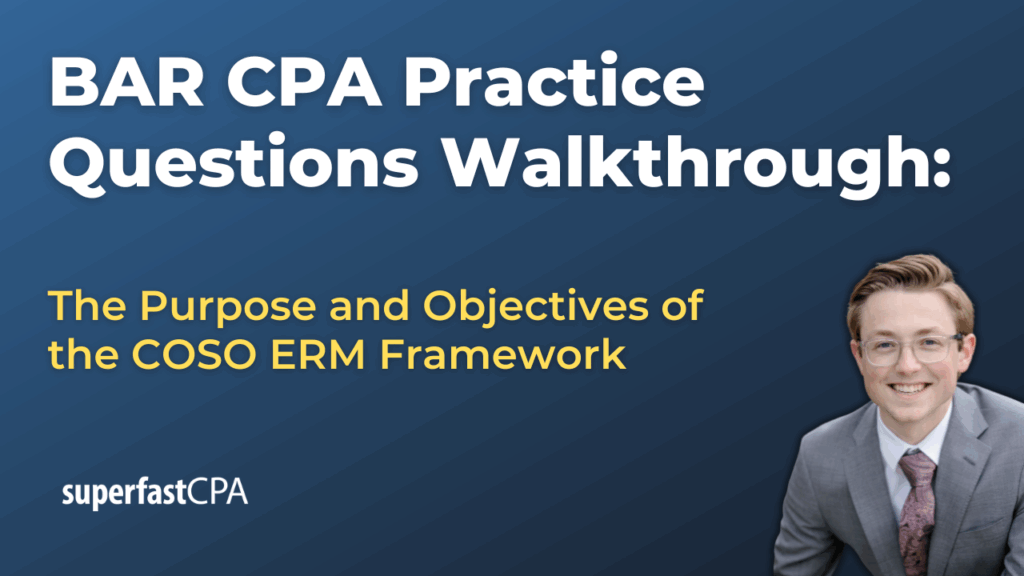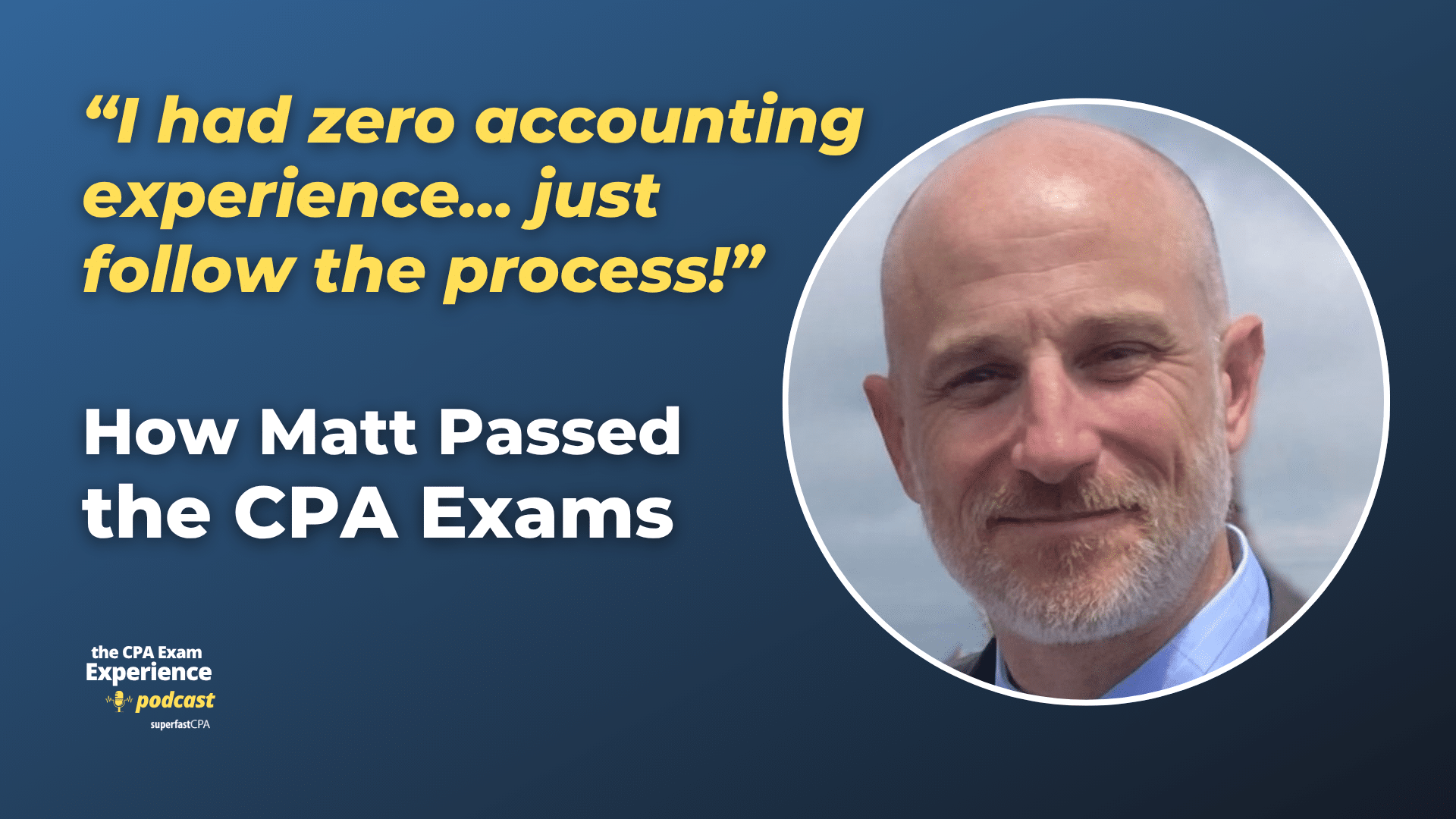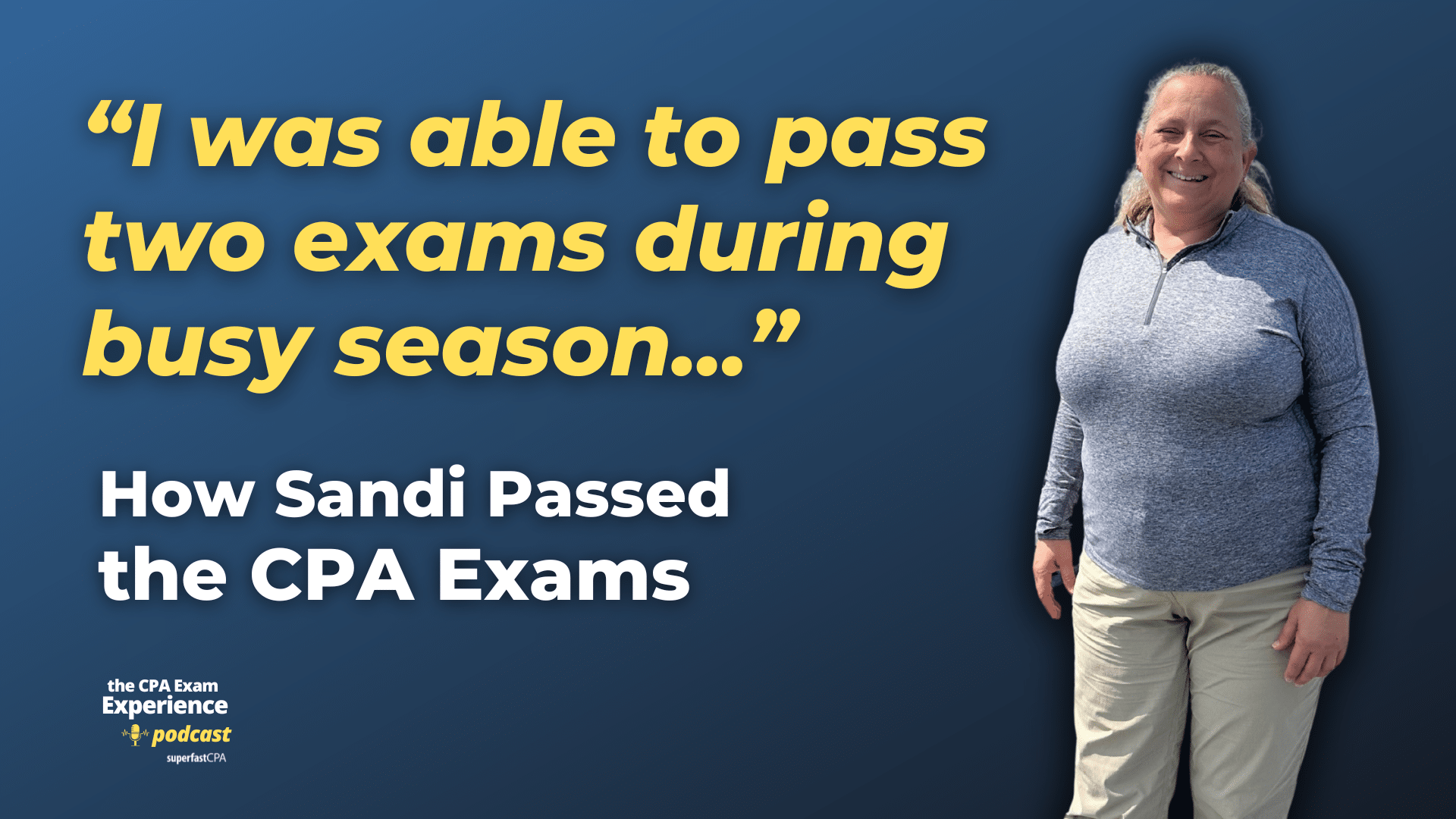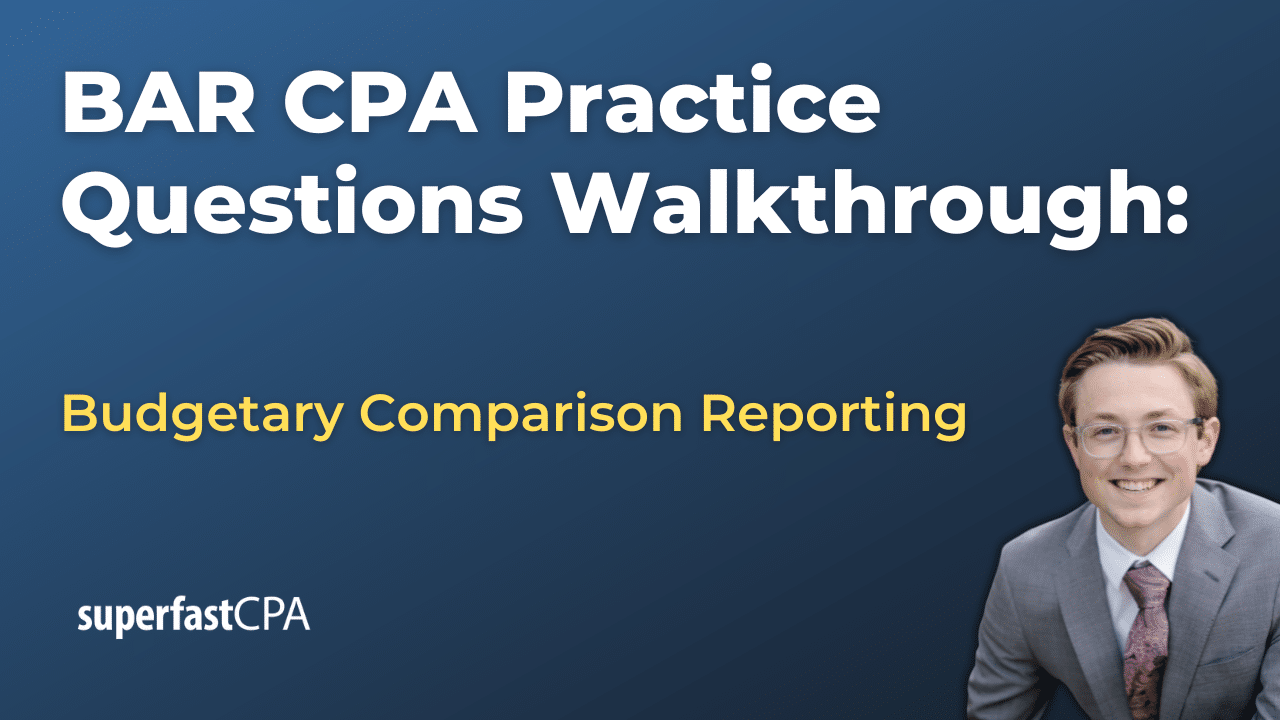In this video, we walk through 5 BAR practice questions teaching about the purpose and objectives of the COSO ERM framework. These questions are from BAR content area 1 on the AICPA CPA exam blueprints: Business Analysis
The best way to use this video is to pause each time we get to a new question in the video, and then make your own attempt at the question before watching us go through it.
Also be sure to watch one of our free webinars on the 6 “key ingredients” to an extremely effective & efficient CPA study process here…
The Purpose and Objectives of the COSO ERM Framework
The COSO Enterprise Risk Management (ERM) framework offers a structured approach to managing risk that goes beyond simple avoidance or mitigation. A clear understanding of the purpose and objectives of this framework is essential. This post outlines the key concepts tested under this blueprint topic, including COSO ERM’s definition, purpose, objectives, limitations, and responsibilities, with examples to support conceptual clarity.
Defining COSO ERM
The Committee of Sponsoring Organizations of the Treadway Commission (COSO) defines ERM as:
“The culture, capabilities, and practices, integrated with strategy-setting and performance, that organizations rely on to manage risk in creating, preserving, and realizing value.”
This definition highlights the fact that ERM is not a stand-alone process or department. Instead, it is an enterprise-wide mindset and system that helps align risk awareness with business objectives. It encompasses strategic planning, day-to-day decision-making, performance tracking, and value assessment. By embedding risk considerations across all levels of the organization, ERM allows entities to anticipate threats, recognize opportunities, and make informed decisions.
For example, a retail company planning to expand into new markets might apply the ERM framework to assess risks related to consumer demand, regulatory compliance, and operational capacity—before finalizing its expansion strategy.
The Purpose of COSO ERM
The primary purpose of COSO ERM is to enable organizations to achieve their strategy and performance objectives while managing uncertainty. It shifts the perspective on risk from being reactive and compliance-driven to being strategic and integrated into core decision-making.
The framework supports organizations in:
- Aligning risk with strategic intent
- Promoting consistency in operational and financial performance
- Anticipating potential disruptions and preparing appropriate responses
- Fostering resilience in a dynamic environment
For instance, a global airline may use ERM to assess the risks and rewards of locking in long-term fuel contracts. Rather than avoiding risk entirely, the airline’s management evaluates whether such a hedge aligns with the company’s strategic priorities, such as cost stability and shareholder value.
Objectives of COSO ERM
While the purpose of ERM is broad, the framework identifies several specific objectives that it is designed to help organizations achieve. These include:
1. Reducing performance variability: By anticipating and managing risk, organizations can deliver more stable results.
2. Improving decision quality: ERM ensures that risk factors are considered in all major decisions, thereby increasing their alignment with the organization’s risk appetite and strategic intent.
3. Enhancing value creation and preservation: The framework recognizes that taking risk is often necessary for growth and innovation, and helps ensure that such risk is taken intelligently.
4. Increasing stakeholder confidence: Transparent and proactive risk management improves the organization’s credibility with investors, regulators, customers, and employees.
A biotech company engaged in new product development may use ERM to manage research risks, clinical trial uncertainties, and market approval timelines. By doing so, the company preserves investor confidence while increasing the likelihood of product success.
Responsibility for ERM
A common misconception is that ERM is the sole responsibility of the internal audit or compliance functions. In reality, the COSO ERM framework emphasizes that effective risk management must be led by management and overseen by the board of directors.
Responsibilities include:
- The board of directors: Sets the tone at the top and provides governance and oversight.
- Senior management: Leads ERM strategy and ensures integration with daily operations.
- Functional leaders and business units: Implement ERM practices in decision-making, reporting, and operational planning.
ERM is an enterprise-wide discipline, requiring participation from every level of the organization. For example, a manufacturing company launching a new product line would require input from product design, procurement, marketing, and finance teams to assess and manage associated risks. Senior executives would oversee the alignment of these risks with strategic goals, while the board would review risk exposure and organizational readiness.
Limitations of ERM
While COSO ERM is a powerful framework, it is not without limitations. Understanding what ERM cannot do is just as important as knowing what it can.
Common limitations include:
- Human judgment: Errors, bias, and incomplete information can affect risk assessments and decisions.
- External unpredictability: Events such as political unrest, pandemics, or natural disasters may be beyond the organization’s control.
- Collusion and management override: Strong controls may be circumvented through intentional misconduct.
- Cost-benefit constraints: Resources for implementing ERM are limited, and organizations must balance effectiveness with efficiency.
For example, a financial institution may have a robust ERM program but still face losses if interest rates rise unexpectedly or if management decisions are based on overly optimistic forecasts. COSO ERM does not eliminate these risks—it helps prepare for and respond to them.
Using Components to Understand the Framework’s Purpose
Although the CPA blueprint for this topic does not require detailed memorization of the COSO ERM components, understanding them can help clarify how the framework supports its stated purpose and objectives. The five components of COSO ERM are:
- Governance and Culture: Establishes oversight, ethical behavior, and organizational accountability.
- Strategy and Objective-Setting: Ensures alignment between strategy, risk appetite, and operational goals.
- Performance: Monitors risks that may impact the achievement of objectives and evaluates response effectiveness.
- Review and Revision: Enables the organization to adapt and refine its risk management processes over time.
- Information, Communication, and Reporting: Facilitates the flow of risk-related information to decision-makers at all levels.
Consider a logistics company that uses the Performance component to track delivery delays. By identifying trends early, the company can adjust its sourcing strategy and maintain service levels. This supports the broader ERM objective of reducing performance variability and preserving customer value.
Conclusion
The COSO ERM framework offers a structured, integrated approach to managing risk in a way that supports the achievement of strategic and operational objectives. While it does not eliminate risk or ensure success, it empowers organizations to navigate uncertainty more effectively and align risk management with value creation.
For CPA candidates, understanding this framework means recalling:
- What ERM is and how it is defined by COSO
- The purpose it serves within an organization
- The key objectives it supports
- The inherent limitations it faces
- The organizational roles responsible for implementing it









